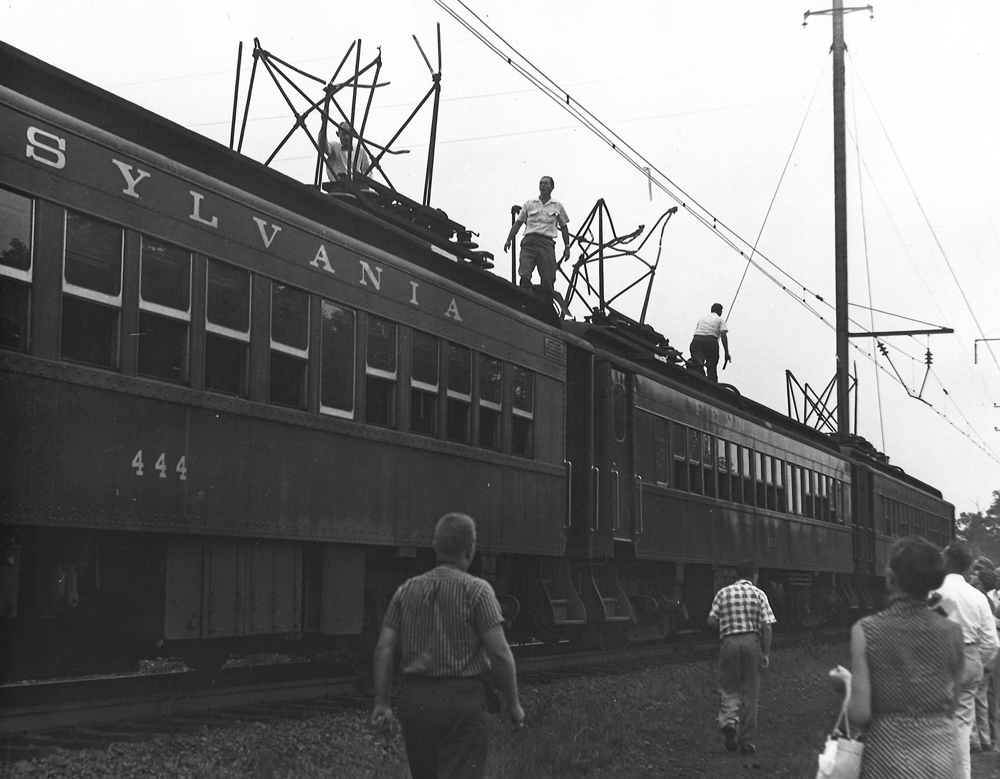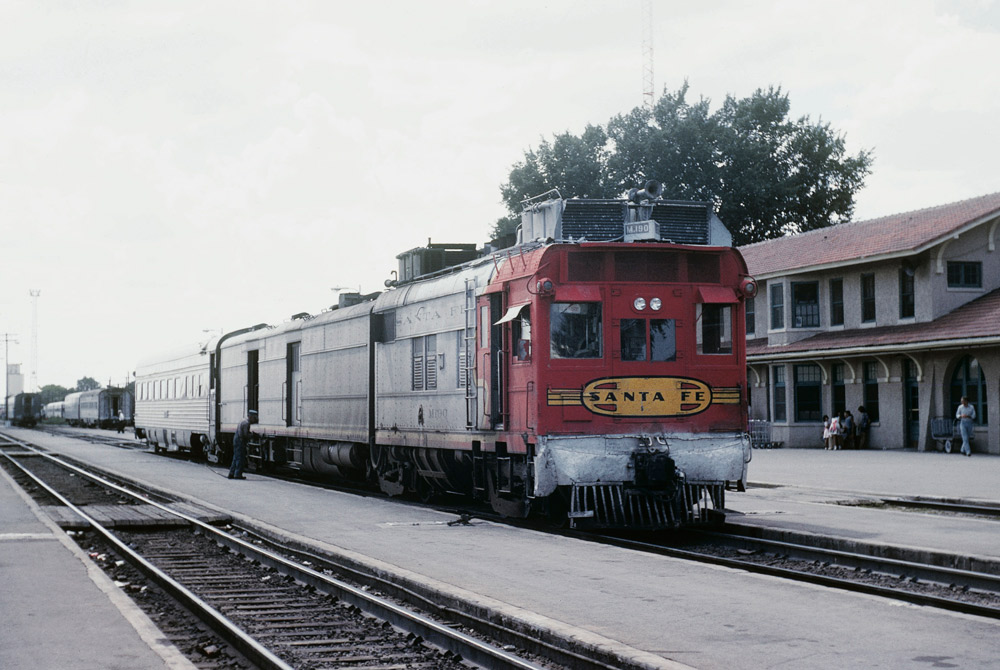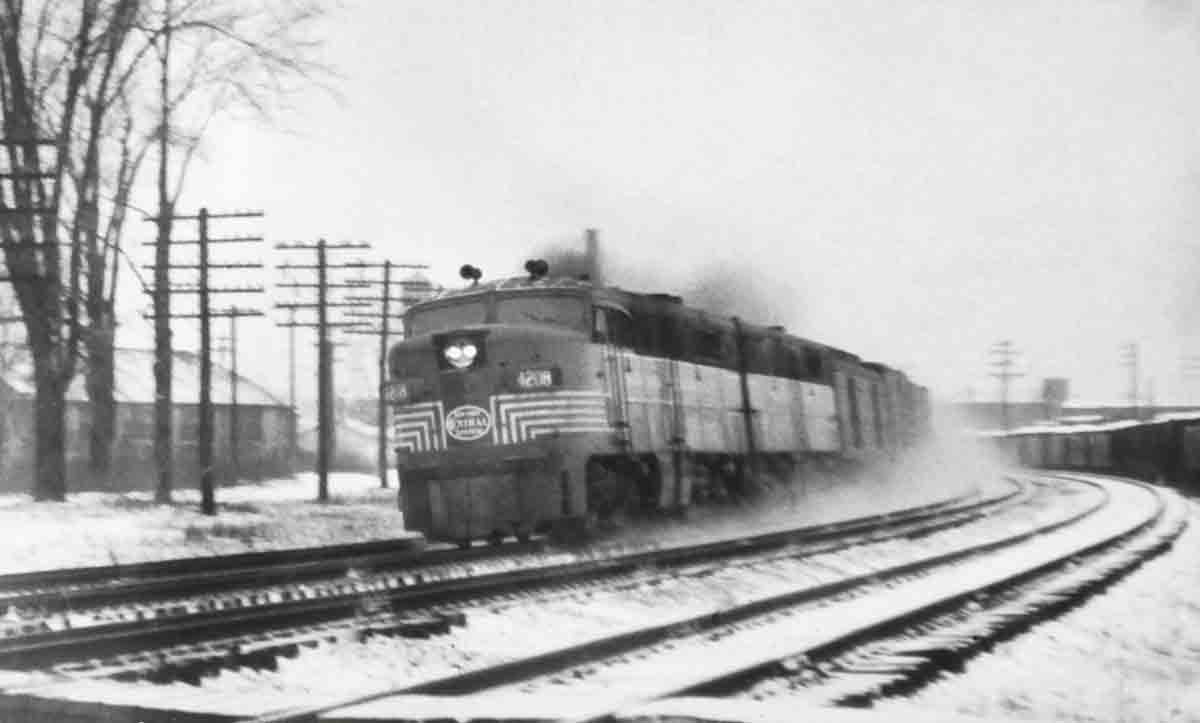ACL’s raceway occasionally would narrow to single track when encountering a drawbridge over a river, or a wide marsh associated with a river. There was just such a place between Savannah and Jesup, Ga. About 3 miles north of the Altamaha River at Doctortown, the double iron converged to single to negotiate the Back Swamp and the draw span. Double track resumed just south of the bridge. Operation on the double track was by automatic block with Rule D-251, right-hand running. At Back Swamp, the northbound track was straight through the switch, while southbound trains had to slow to 35 mph for the turnout into single track. The draw span, 3 miles to the south, also had a 35-mph limit, so a southbound passenger train might get back up to 50 or so between the two points before slowing again, even though there was no restriction on the intervening track. Northbound trains accelerating away from the bridge might hit 60 or 65 by the time they passed the Back Swamp switch.
In this operating pattern lay an unforeseen problem. In those days, Nos. 1 and 2, the East Coast Champion, were the hottest trains on Coast Line rails. They made very few stops and always maintained track speed. Even though Champion McDowell Davis had retired as ACL president, delay to these trains still meant that heads would roll.
In the 1960’s, Centralized Traffic Control was being installed between Savannah and Jesup. The operator’s job at Doctortown, which had controlled the north and south ends of double track, was long gone, with the switches and signals there controlled by the Waycross (Ga.) dispatcher. North of Back Swamp, it remained right-hand running until cutover day came and the CTC was put in service. Now trains could run in either direction on either track north of Back Swamp. For most of the first day and night, operations continued mostly as usual with trains running right-handed.
Then, early the next morning, Savannah-Waycross freight No. 119 got in ahead of No. 1, providing the first real opportunity to make use of the CTC. Train 119 was allowed to run down the former southward main track toward Back Swamp, while No. 1 would overtake it at full speed on the former northbound main. In earlier times, 119 would have holed up somewhere to let No. 1 by, but with the new CTC, the Champion could be shifted over and 119 would not be delayed.
The Waycross dispatcher rejoiced at his new power. No. 119’s crew was incredulous but elated. The Champ‘s engineer proudly sounded two short toots on his air-chime whistle to greet 119’s caboose as he looked far ahead at the new green-over-red CTC signal at Back Swamp. He tooted another hello as he flew past 119’s F units and approached the signal and switch, the speedometer pegged at the century mark. The super would smile when he heard about this heads-up railroading. The expense would be justified in management’s eyes.
But something was suddenly horribly wrong! As they entered the single-track, the Champion‘s E units leapt, pitched, and yawed dangerously. Baggage fell all over the combine. Luggage flew out of overhead racks in the coaches, and in the dining car, breakfasts were tossed into laps. Waiters teetered and diners tottered. Passengers got pitched from their seats and tumbled from their berths.
No train, you see, had ever used that single iron at track speed before—northbounds had always been slowed by the Altamaha bridge at Doctortown and southbounds by the turnout at Back Swamp. No one had considered it good for more than 50 or 60. The roadway department had never ridden over it at 100, nor would they soon try!
The Champion‘s engineer thought quickly. He did not brake, but simply moved his throttle to idle and let the train slow itself, praying they would not take to the marshes. They didn’t.
When 119 came along, his engineer was surprised to find a red-over-red at Jesup, protecting the Champion, which was standing at the depot while crew and passengers alike were calmed and minor injuries treated—and while the conductor took a shower and changed his clothes! Soon the dispatcher was making sure other trains didn’t get into trouble: “Savannah, 19 copy a bulletin south; Jesup, 19 copy a bulletin north,” he said. “Order No. 509, Savannah, C&E southward trains originating; Jesup, C&E northward First Class Trains. Reduce Speed to …”
It might have been a calamity then, but now we can all laugh. Well, all except maybe for one retired conductor.














The law of unintended consequences.